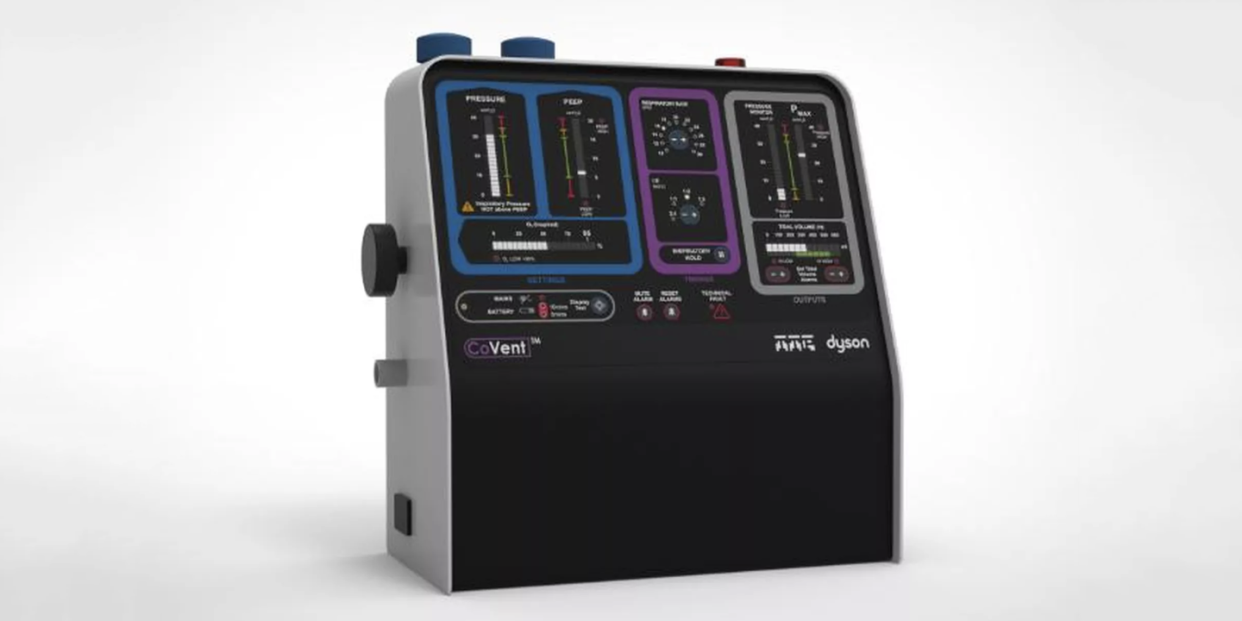Dyson Goes From Vacuums to Ventilators In Just 10 Days

Dyson—most popularly known as a vacuum company—has committed to making 15,000 ventilators to support hospitals and healthcare providers who are running dangerously low on them.
A representative for the company says that the ventilators should be available around “early April.”
Dyson, the U.K.-based vacuum company, is working to produce 15,000 ventilators for COVID-19 patients as hospitals around the world reach patient capacity and suffer from a dangerous lack of sufficient medical and personal protective equipment (PPE).
CNN reports that Dyson received an order for 10,000 ventilators from the U.K. government as the National Health Service (NHS) continues to treat people who have contracted the virus. This new ventilator was named CoVent and was reportedly designed in 10 days.
According to the company, CoVent “can be manufactured quickly, efficiently, and at volume,” and should be available in early April. James Dyson himself also said that he would be donating 5,000 units “to the international effort” with 1,000 of those going to the U.K.. In a letter sent out by Dyson to employees, he mentions that the company has “refocused resources…to design and build an entirely new ventilator” that features Dyson’s digital motor at its heart.
Dyson added that the CoVent was made to “achieve a high quality air supply to ensure its safety and effectiveness, drawing on our air purifier expertise which delivers high-quality filtration in high-volume products.” Dyson said that his company is also working out how to make CoVent “available internationally.”
COVID-19 is a respiratory illness; it attacks the lungs among other parts of the body and can lead to serious health issues including pneumonia. John Wilson, a respiratory physician, told The Guardian that the point at which COVID-19 reaches the respiratory tree is usually around when they start presenting with a cough and fevers. From here, the disease continues to make its way through the lungs where it can potentially enter the areas in which gas is exchanged.
“If [these areas] become infected, they respond by pouring out inflammatory material into the air sacs that are at the bottom of our lungs,” Wilson says. If the sacs are compromised, they become inflamed which leads to fluid entering the lungs and a case of pneumonia. According to Wilson, when this happens, lungs lose much of their ability to take in a sufficient amount of oxygen, in turn making it difficult for the body to expel carbon dioxide. This is where pneumonia can oftentimes become deadly and where a ventilator can be a lifesaver.
A ventilator gets oxygen into the lungs and body—via an endotracheal (ET) tube that gets inserted into the windpipe—and removes excess carbon dioxide to aid in the respiratory process. The machine acts as an artificial set of lungs, doing the breathing for a person who cannot do so on their own. Ventilators even have the ability to hold lungs open in order to prevent the air sacs from imploding via a process called positive and expiratory pressure (PEEP).
Hospitals are strained and low on resources as the influx of patients suffering from COVID-19 continues. Among the medical devices in dangerously short supply right now are ventilators, a shortage Dyson’s CoVent will hopefully alleviate.
You Might Also Like

